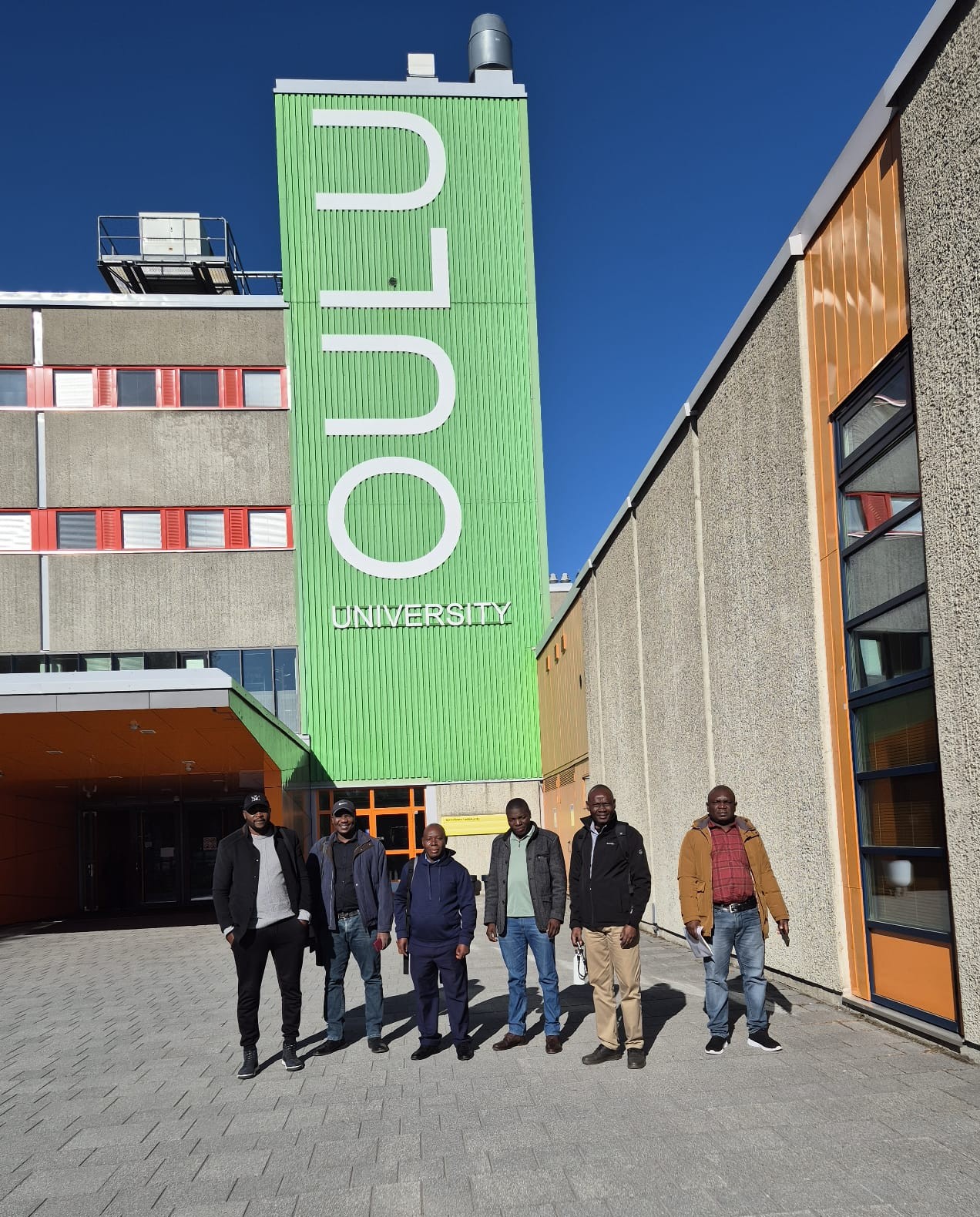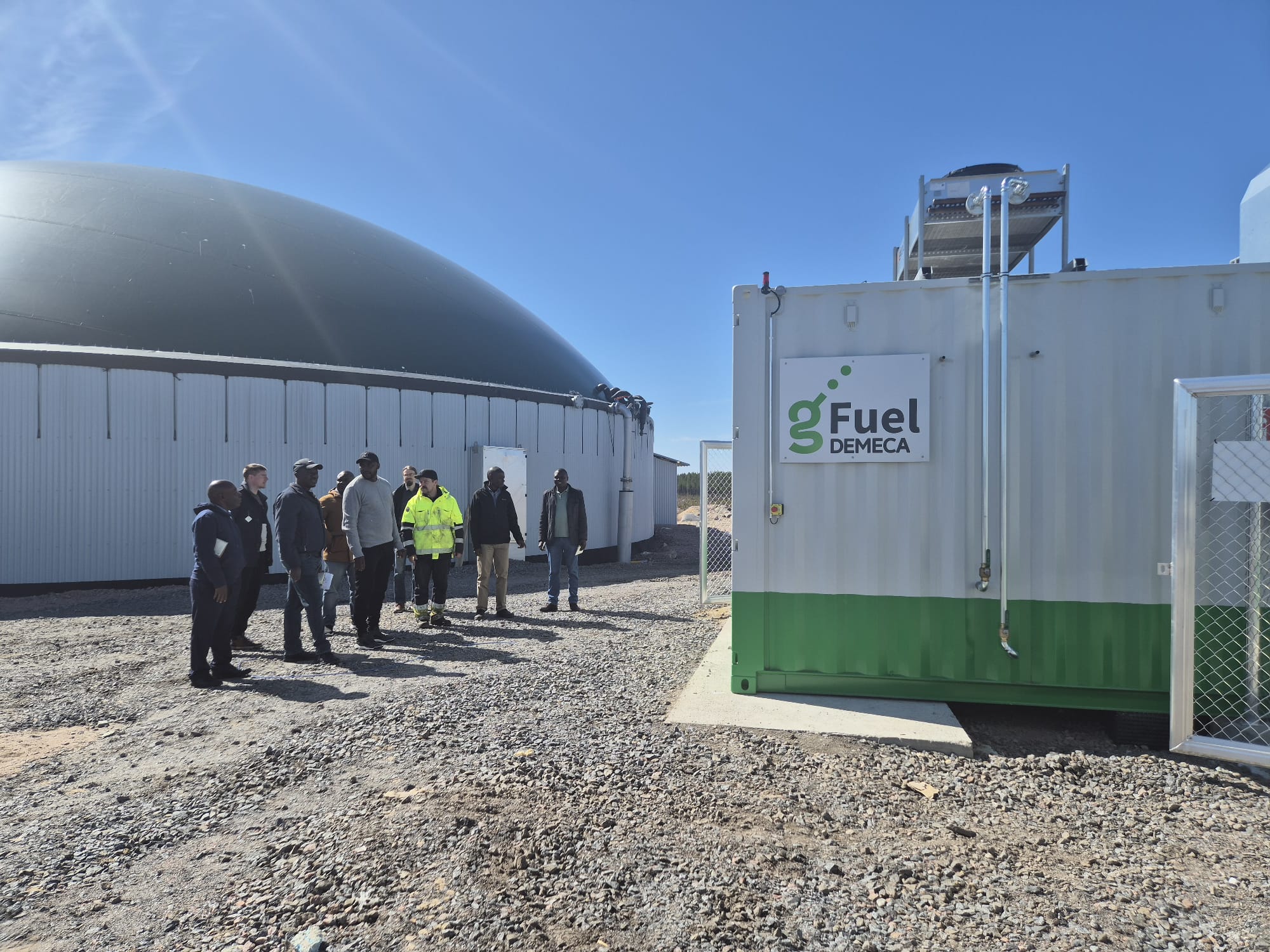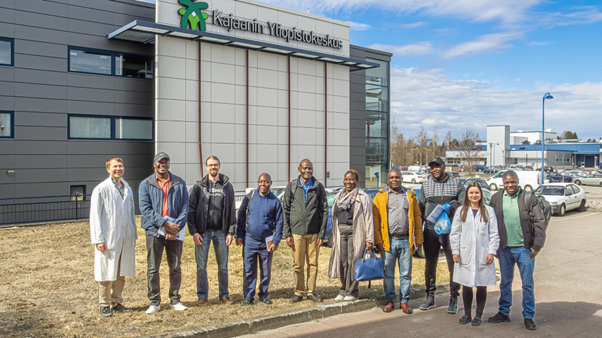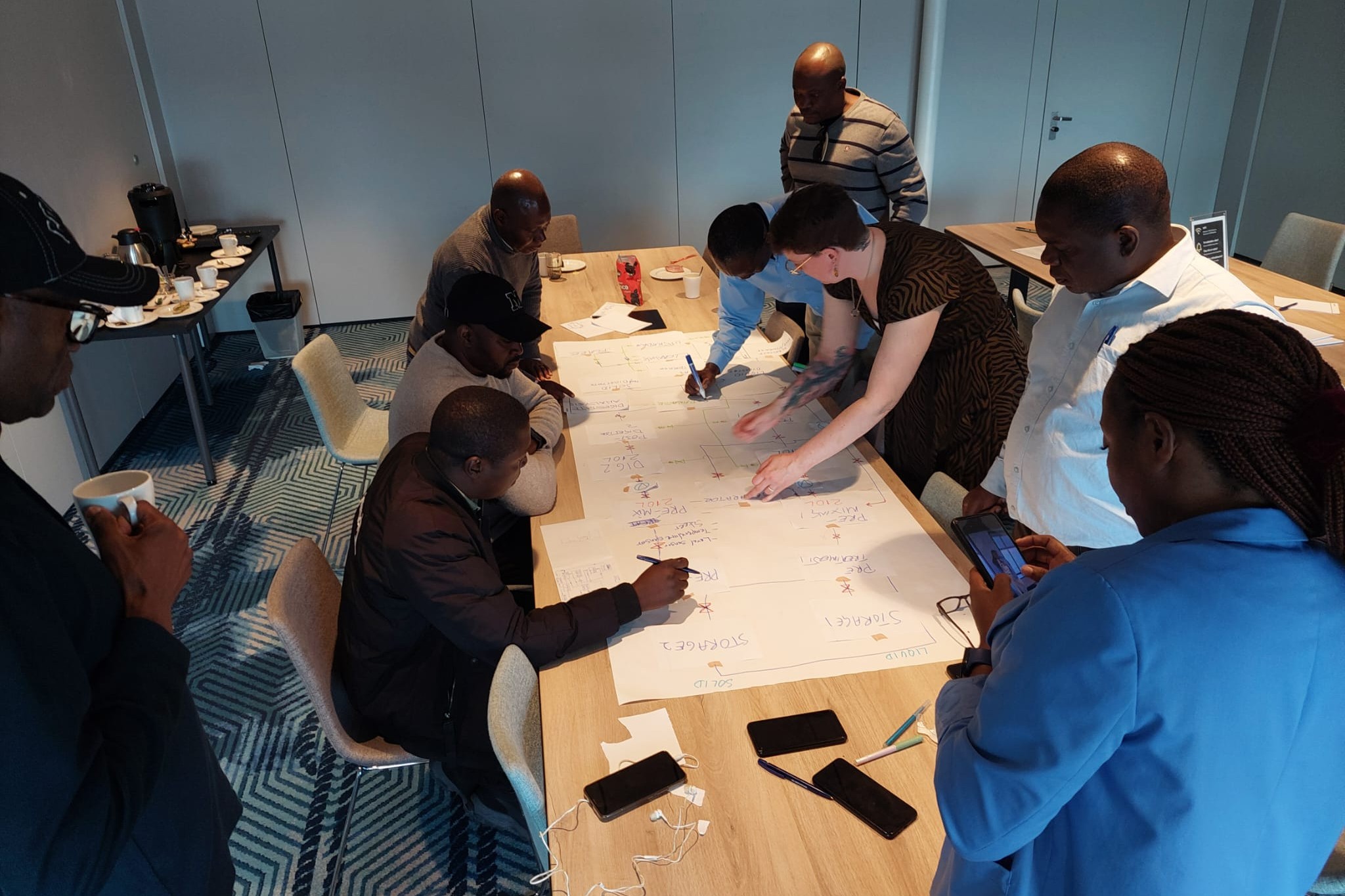Team Zambia visits Oulu and Kajaani

In May 2025, six members of Team Zambia traveled to Finland for a duration of three weeks. Their itinerary commenced with a three-and-a-half-day stay in Oulu, which included a visit to Kajaani. The Zambian delegation was hosted by post-doctoral researcher Petri Hietaharju, the SF-BioVac coordinator at the University of Oulu, and Professor Mika Ruusunen from the same institution. During their time in Oulu, they visited two biogas plants and participated in a workshop focused on planning the pilot biogas plant. Additionally, during a day trip to Kajaani, the team was introduced to various measurement and analysis methods.

Figure 1. Members of Team Zambia at the University of Oulu: Mabvuto Mwanza (left), Mwansa Kaoma, Agabu Shane, Ackim Mvula, Jhonnah Mundike, and Shadreck Mpanga. Photo by Cynthia Söderbacka.
Day 1
The visit to Oulu commenced with a presentation by Professor Mika Ruusunen, who provided an overview of the University of Oulu and the Control Engineering research group. The presentation initiated several engaging discussions. Fortunately, there was also an opportunity to review feedback regarding the recently completed Biogas Plant Design and Operation course. The Zambian team concurred with the generally positive evaluations of the course.
After lunch, Team Zambia visited their first biogas plant during their stay in Finland. The destination was Viskaali biogas plant in Muhos. It is a large farm-scale biogas plant that utilizes various feedstocks such as cow manure, biowaste, and slaughterhouse waste. The plant began operations in Autumn 2024 and can process 34,000 tons of feedstock annually producing 15 GWh of biogas. The produced biogas is used to generate heat for the process itself, and it is also cleaned and upgraded to biomethane for use as vehicle fuel. During the visit a sample of digestate was also gathered. This sample would be analysed in Kajaani the next day.

Figure 2. Team Zambia at Viskaali biogas plant in Muhos, with the digester in the background and biogas cleaning and upgrading equipment on the right. Photo by Cynthia Söderbacka.
Day 2
The second day began early, with the train departing from Oulu to Kajaani shortly after seven in the morning. The destination in Kajaani was the Measurement Technology unit at Kajaani University Consortium. Jarkko Räty, the director of the consortium and the unit from 11 August 2025, provided an overview of the unit's research. Following this, researchers Tuomas Niskanen and Jasmiina Haverinen provided a practical introduction to various measurement and analysis methods using the digestate sample from Viskaali biogas plant collected the previous day.
Throughout the day much was learned, several engaging discussions took place, and participants were given a tour of the facilities. A notable highlight of the visit was the tasting of the traditional Finnish drink, Sima, which was prepared by Tuomas using a bioreactor. The Zambian delegation liked the drink very much and departed from Kajaani with the recipe for Sima.

Figure 3. Team Zambia at Kajaani University Consortium after having the traditional Finnish drink sima. In the picture are also Tuomas Niskanen (first from left) and Jasmiina Haverinen (second from right) from the Measurement Technology unit, Petri Hietaharju from the University of Oulu (third from left) and Cynthia Söderbacka from Novia (sixth from left). Photo by Tuomas Niskanen.
Day 3
On the third day of the visit to Oulu, an intensive workshop was held focusing on the planning and design of the laboratory-scale pilot biogas plant in Zambia. The morning session was dedicated to discussing the various components required for the pilot plant. Team Oulu contributed their expertise in design, while Team Zambia offered essential local insights. After lunch, the discussions continued, culminating in Team Zambia being tasked with developing a preliminary layout and component list for the pilot biogas plant. These would be reviewed the following day.
The day concluded with a visit to Rusko biogas plant in Oulu. It is a large industrial-scale biogas plant that processes sewage sludge, food industry side streams and biowaste. The plant began operations in 2015 and processes 93,000 tons of feedstock annually producing 48 GWh of biogas. Produced biogas is sold to the local waste management company who has a gas upgrading and filling station in the area.
Day 4
On the morning of the fourth day, Team Zambia presented their draft design for the pilot biogas plant. Team Oulu provided constructive feedback on the design, leading to a highly productive discussion. While the design was the first draft, it represented a promising start, and Team Zambia continued to work on it during their visit to Finland. After lunch, Team Zambia, along with Cynthia, departed from Oulu by train towards Turku.

Figure 4. The team from Zambia engaged in the pilot biogas plant design during their visit to Finland, applying the knowledge gained from the intensive workshop held in Oulu. Photo by Roger Nylund.
Conclusions
It was a privilege to host the Zambian delegation in Oulu. We trust that everyone had an enjoyable experience and appreciated the activities organized for the visit. We hope that Team Oulu successfully imparted comprehensive biogas knowledge to support the development of the pilot biogas plant in Zambia. Additionally, the weather in Oulu and Kajaani was remarkably favorable during the visit. We look forward to welcoming our Zambian colleagues back to Oulu in the future, as well as the continuation of our cooperative efforts.
Authors: D.Sc. (Tech.) Petri Hietaharju and Professor Mika Ruusunen